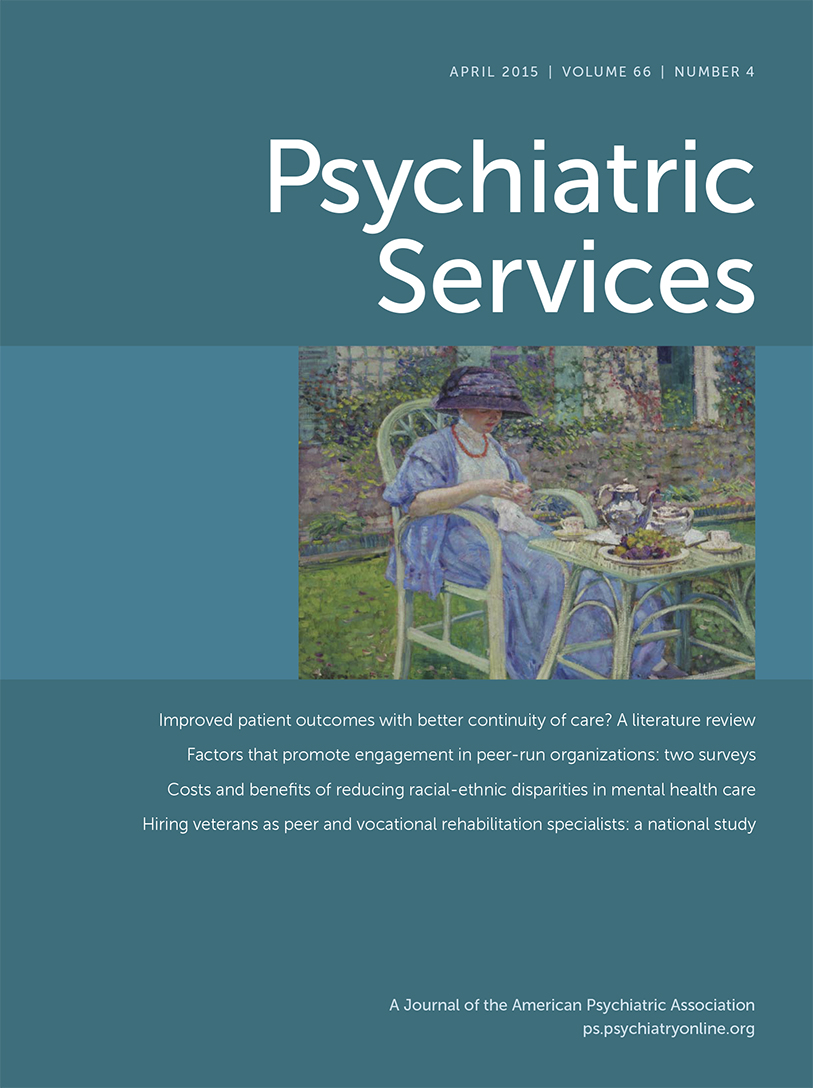This Month’s Highlights
Continuity of Care: Three Studies
Continuity of care is a central tenet of services delivery. Better continuity of care has been shown to lead to better patient outcomes in several areas of general medicine. However, research on mental health care in this area is limited. Stephen Puntis, B.Sc., and colleagues conducted a systematic literature review to examine whether continuity of care is associated with better patient outcomes in mental health care. Although they noted increasing interest in this topic in recent years, these authors found little consistency across the 18 studies they reviewed, either in the way that continuity was measured or in the outcomes assessed for their association with continuity of care. The authors conclude that there is still no clear evidence that continuity of care improves patient outcomes in mental health care, and they call for more consistent measurement of this important quality indicator (page Original article: 354). Timely outpatient follow-up after psychiatric hospitalization may improve outcomes. Christopher A. Beadles, M.D., Ph.D., and his colleagues analyzed six-month outcome data for more than 18,000 Medicaid-enrolled adults discharged from psychiatric hospitalizations in North Carolina. Patients with an outpatient follow-up within seven days—with any type of provider—had greater medication adherence and outpatient service use than those who received no follow-up within 30 days. Patients who had a follow-up with a mental health provider were less likely to use inpatient or emergency department services (page Original article: 364). Finally, a randomized controlled trial in Iran examined the efficacy of aftercare services in reducing the number and length of rehospitalizations among patients with schizophrenia. Mohammad Ghadiri Vasfi, M.D., and colleagues found significantly fewer and shorter rehospitalizations among the 60 patients assigned to the aftercare intervention. Psychopathology was also less severe than in the control group (page Original article: 373).
Focus on Consumer-Run Organizations
Evidence is accumulating that consumer-run organizations (CROs) are an effective, low-cost strategy for promoting recovery among individuals who use mental health services. Two studies in this issue focus on consumer involvement in CROs, which is essential to their operations. In the first study, Louis Davis Brown, Ph.D., and Greg Townley, Ph.D., visited 20 CROs in Kansas and surveyed 250 members. They were interested in identifying individual and organizational factors related to three types of consumer engagement—attendance, leadership involvement, and socially supportive involvement. Only one factor predicted all three types: consumers’ perceived sense of community. The authors consider strategies to promote a sense of community in CROs (page Original article: 411). The second study also analyzed survey data—this time from the 2012 National Survey of Peer-Run Organizations. Laysha Ostrow, Ph.D., M.P.P., and Stephania L. Hayes, M.A., O.T.R., divided these organizations into two groups by the level of peer involvement in the board of directors: peer controlled (more involvement) or peer directed (less). The authors then compared the two groups to determine whether leadership structure was associated with variations in five key domains (page Original article: 421).
The Business Case for Reducing Disparities
Racial-ethnic disparities in use of mental health care are often approached as an equity concern, deserving of attention from policy makers and clinicians . However, disparities often result in inefficient service use patterns, such as when delays in treatment lead to the need for more acute and costly care. Can reductions in disparities lead to cost savings? To answer this question, Benjamin Lê Cook, Ph.D., M.P.H., and colleagues analyzed data from the 2004–2010 Medical Expenditure Panel Survey for a subsample of more than 6,200 individuals with a probable need for mental health care. First, the authors identified disparities in treatment. In the next step, they used two-year panel data to determine whether receipt of mental health outpatient and pharmacy treatment in year 1 led to cost offsets in year 2. In the final step, they estimated savings by combining results from steps 1 and 2. For African Americans and Latinos, the potential savings from eliminating disparities were substantial (as much as $1 billion nationwide), the authors concluded, “suggesting that financial and equity considerations can be aligned when planning disparity reduction programs” (page Original article: 389).
Briefly Noted
| • | A North Carolina study that followed a cohort of youths from age 13 to age 26 found that use of mental health care declined precipitously in young adulthood among those who continued to need it (page Original article: 397). | ||||
| • | According to estimates from a cost model that used published data from a variety of sources, interventions to improve adherence to antipsychotic drugs among patients with schizophrenia could lead to annual savings to states of more than $3 billion (page Original article: 343). | ||||



